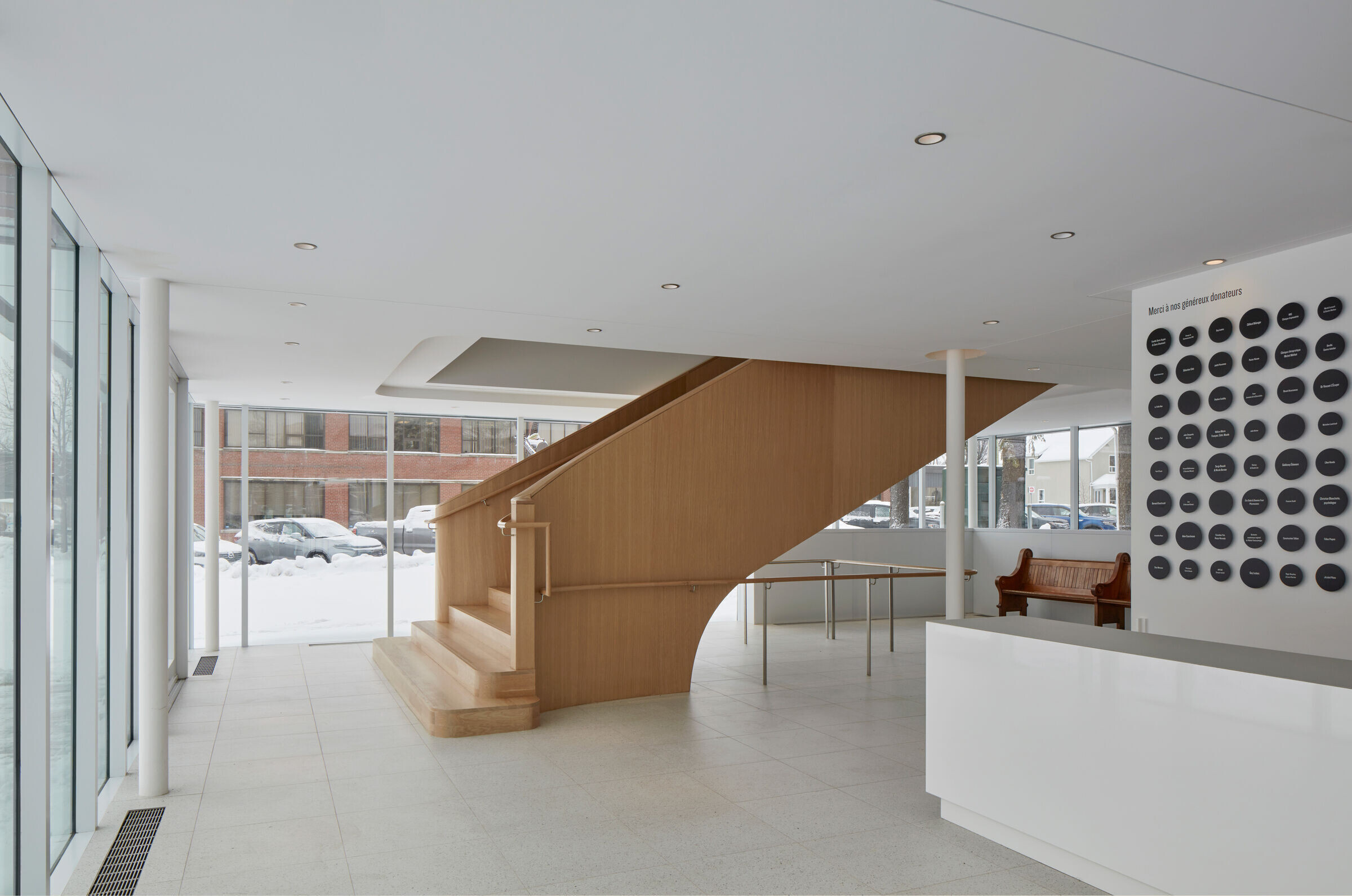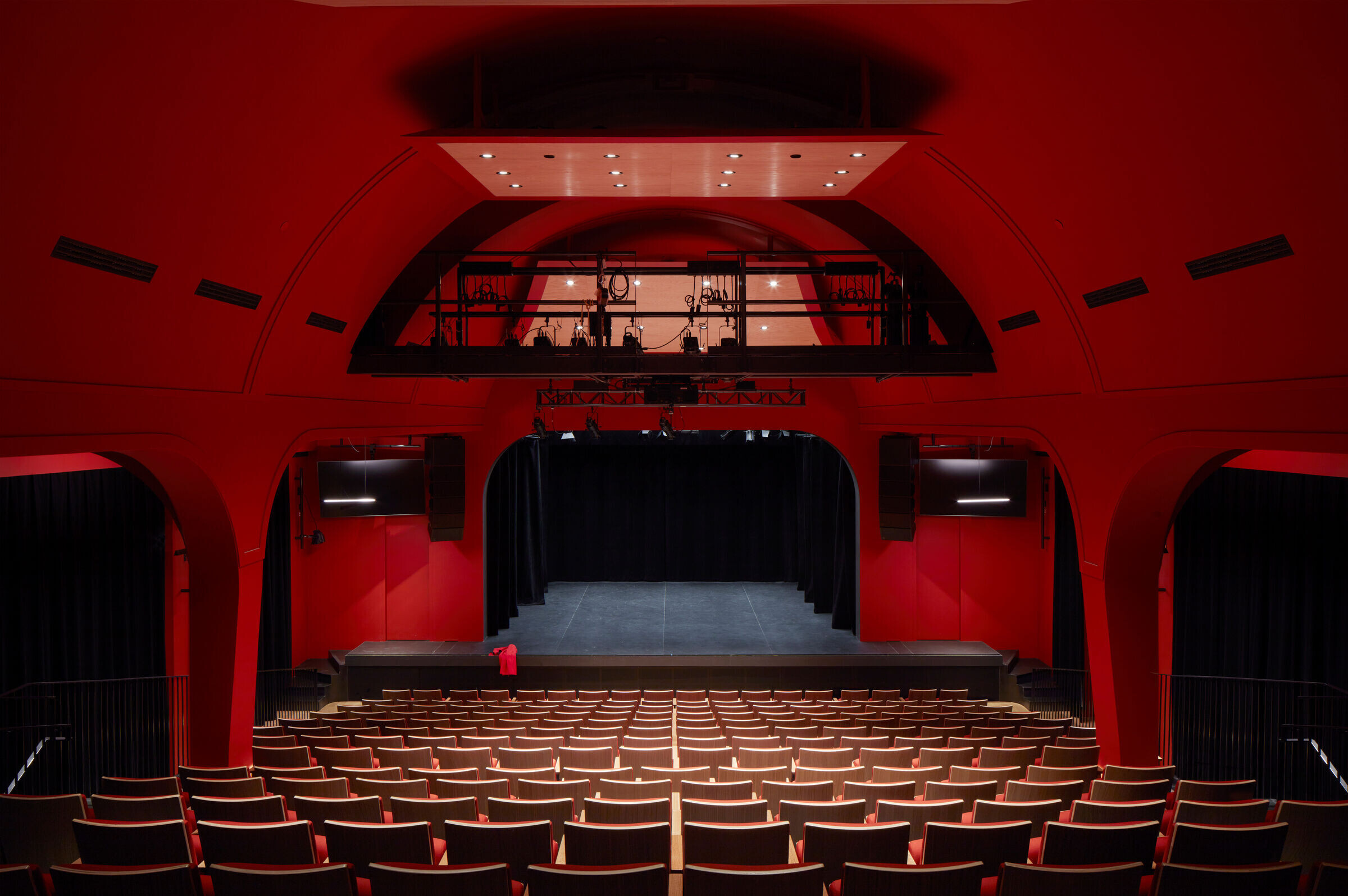For several years now, the city of Rouyn-Noranda has been grappling with a major environmental problem: arsenic emanations that greatly exceed Quebec standards and acceptability thresholds, beyond which exist the health risks for citizens, particularly those in the Notre-Dame district where the Agora des arts is located. So much so, in fact, that among the measures put in place to mitigate the problem, an agreement was recently reached to demolish part of this working-class, heritage district of Old Rouyn-Noranda and replace it with a green, non-accessible buffer zone, in order, among other things, to keep the factory in operation.
The Agora des arts stands directly and proudly opposite the Horne foundry, one street away from these massive demolitions, forcing the relocation of over 200 households. In this difficult context, the object of memory and the narrative we set out to create took on a very special significance, becoming one of the cornerstones of the major project to revitalize Old Rouyn-Noranda.

The original brief for this project, which emerged from an architectural competition held in 2018, was to demolish the church's main staircase, deemed unsafe at the time, create a performance hall and creative studio free of visual obstructions, and implement a new foyer and the support spaces required to accommodate the varied clientele ranging from numerous schools to festival-goers and artists in residence. From the outset, this project was conceived as an exercise in memory and heritage rehabilitation of the various social, cultural and landscape values of the ensemble comprising the Notre-Dame-de-Protection church and its presbytery, which we wished to augment with a third small contemporary building woven from a masonry mesh. The proposal was relatively simple:
- Revive and interiorize the grand staircase where so many memories, Christmas masses, christenings, weddings, deaths and more recently, equally memorable concerts and plays have been created over more than eighty-five years. The staircase is desacralized and theatricalized, becoming a genuine performance space, visible from all sides through a curtain wall, ensuring the transition between the ground floor and the upper foyer, leading to the auditorium. It is made of wood, with textures and glossy finishes that protect it and echo the more or less modest wooden structures found in churches in the form of pews, pulpits or confessionals.
- Above the staircase, a mesh of masonry protects and reveals this space that is characterised as an in-between or “between two worlds”, which at night gently ignites and radiates out into the neighbourhood. Acting as a an ode to the building’s heritage where red brick dominates - as illustrated in representations of the site prior to its construction - this small floating box from which emanates a soft light sets up both the contemporary identity of the new use: a transitional object for a venue dedicated to the performing arts and as an object of memory in dialogue with the existing as well as with the surrounding urban context.
- Create a new entrance at the same location as the previous one, in line with the spire, but this time universal and connected to the street, making the premises more inclusive.
- Open up an upper forecourt with a roof terrace, acting as a natural extension of the foyer and providing a new space for socialization and representation on Murdoch Street.
- Implement a public space at the corner of Murdoch and 7th Streets, linked to the grand staircase, to accommodate the various festivals that will naturally extend into the building.
- Maintain the large black spruce trees characteristic of the Abitibi forest.

Ultimately, all the elements of the composition, to which we add the statue of Christ, the guitar sculpture at the corner of 7th Street and the new characters by artist Stephen Schofield, including the “mistress of ceremonies”, who now inhabits the forecourt, constitute a rich narrative about the region, its history, its dreams, its perils and its vitality.

This heritage church, known and frequented by an entire community, was highly outdated, not in keeping with current regulations, and particularly water damaged. It was renovated, waterproofed and re-insulated, particularly in the basement and attic areas. The electrical system was also entirely outdated, and was completely overhauled to accommodate the new theater program and to take over the entire heating and ventilation system, eliminating the use of gas throughout the building. Ventilation (previously non-existent) and adequate heating were also installed for the comfort of occupants, ultimately resulting in higher energy expenditure than initially, but controlled nonetheless.

The overhaul of electromechanical systems and the replacement of conduits, electrical systems and wiring with new equipment that is easier to operate and more economical, make it possible to maintain the institution's very austere cultural operating budgets and reduce the building's life-cycle costs over the long term. Ultimately, in addition to the rehabilitation of the building, the following choices were made in the objective of creating a socially and environmentally responsible project that responds to the current socio-economic context:
- 100% renewable, low-carbon energy source.
- Air supply with variable flow rate according to the needs of each zone, to limit simultaneous heating and cooling of spaces.
- Distribution of ventilation according to use and exterior facades to limit simultaneous heating and cooling of spaces.
- Installation of water-saving appliances: low-flow automatic faucets, low-flow showers.

The Chevalier Morales team, led by project manager Stephan Chevalier and design manager Sergio Morales, continued the design and planning phase following the competition, working very closely with the client and coordinating the work of the other team members (engineers and scenographers), despite the long distance between Rouyn-Noranda and Montreal. The continuation of this meticulous planning work enabled us to refine the program and streamline certain aspects of the project within an extremely tight budget in relation to the project's objectives.
In conclusion, l'Agora des Arts sees itself as a place of memory that collects and promotes the past, present and future of the city of Rouyn-Noranda, showcasing the diverse cultural programming of a vibrant city.

Team:
Architects: Chevalier Morales
Photo Credits: James Brittain, Chevalier Morales














































